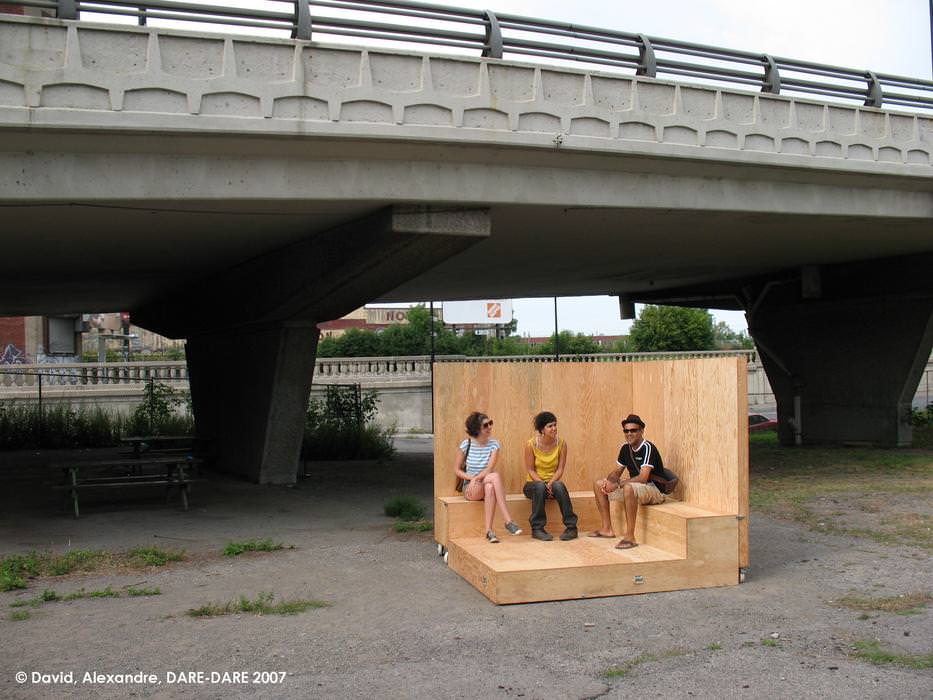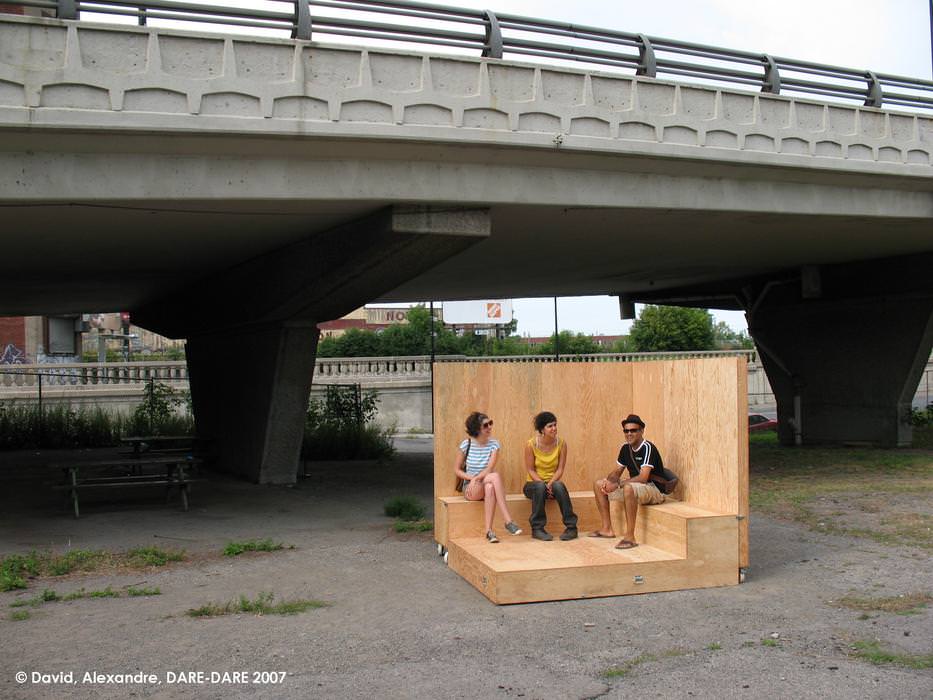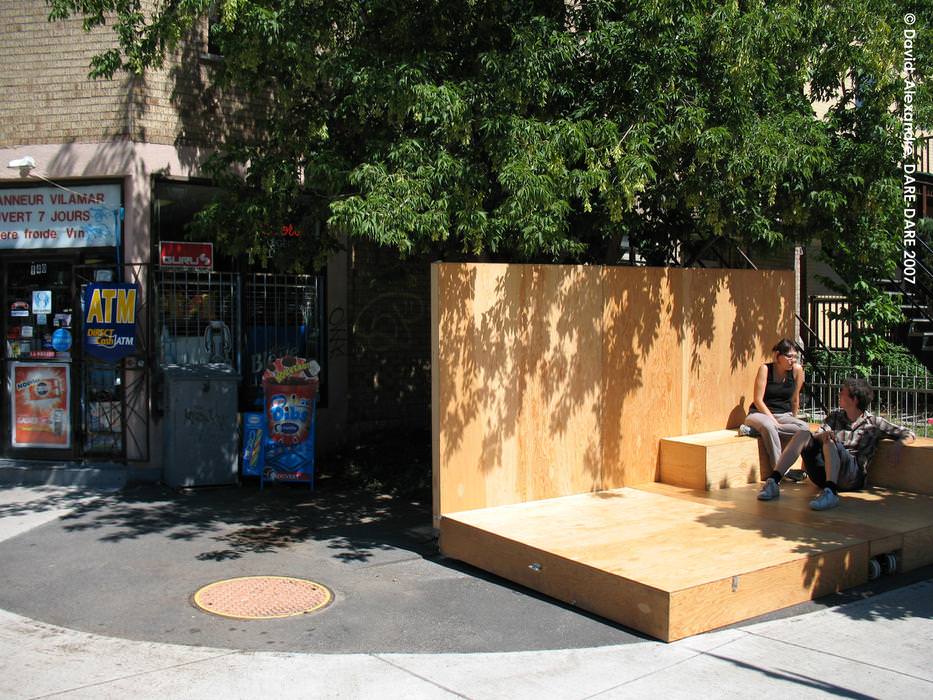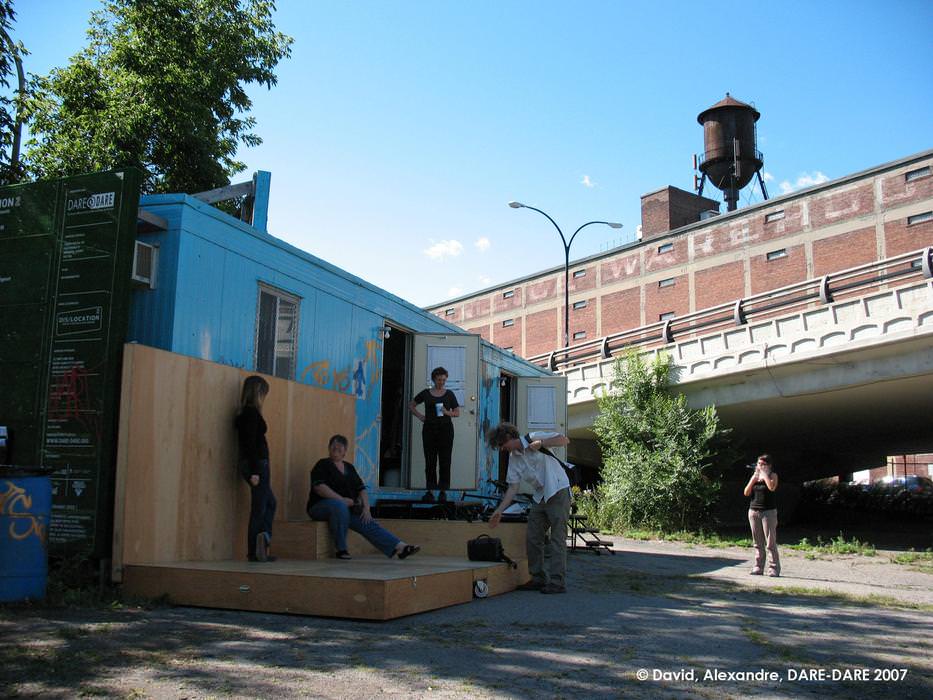Programming
Alexandre David
Faire des places
Three mobile objects, temporarily installed in the no name park, can be carried away and installed anywhere.
View more
To the notion of informal use, which relates rather to the object deployed and momentarily fixed in one place, one could add that of poor use to describe the relationship between the object and its own mobility. The Franciscans, to whom we owe this expression, refused not only the property, but also opposed that their use of the property is marked by the law (for example, the regulation concerning the prohibition of the dogs in the Viger and Émilie-Gamelin parks in the Ville-Marie borough seem to be aimed primarily at eliminating the presence of homeless people who have dogs). If we dismiss this notion of a usage without right on the space of the city, it allows us to refuse an organization of the city which seeks a conformity between types of places and corresponding attitudes. Each of us places places of personal importance and each one adapts differently to the places already invested by a community. For the artist, this project is an attempt to sneak between sharing places more or less determined by oneself and others. (For an additional discussion, see a minor biopolitics, interview with Giorgio Agamben directed by Stany Grelet and Mathieu Potte-Bonneville, Din 10, Winter 2000.)
Some of my works work like paintings while others work more like architectural places within which one can move. Others, halfway between painting and architecture, are designed to render the distinction between image and use ineffective.
An opening took place on Friday, August 10 from 18h to 23h.
Alexandre David is an artist who lives and works in Montreal. His works in sculpture, photography, and painting have been exhibited in locations across Canada, France, the United Kingdom, and the Netherlands. He is the recipient of the 2006 Louis Comtois Award.






